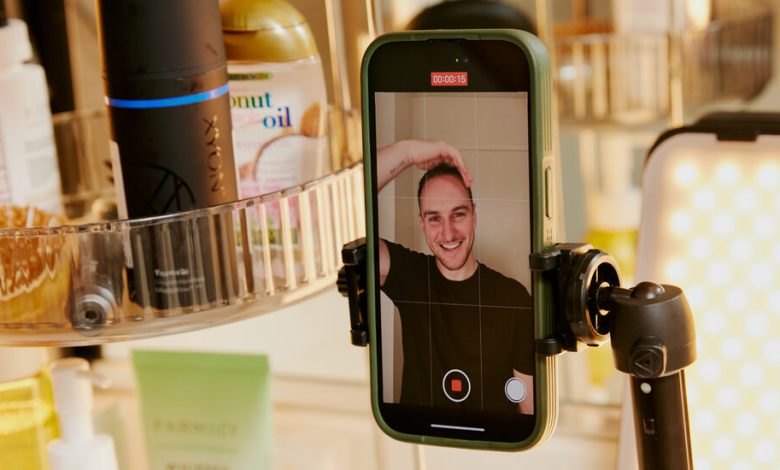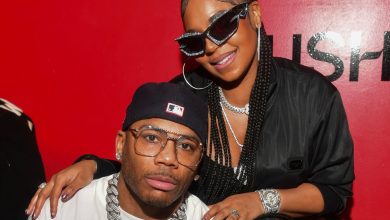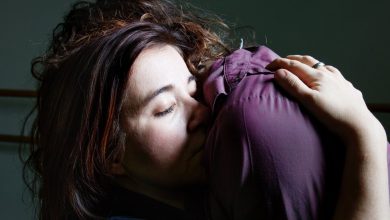Losing Hair, Gaining Followers

Zeph Sanders was 20 when his hair began to fall out. As it thinned from the density of AstroTurf to spare wisps, he hid his head under a beanie before logging on to play video games on the livestreaming platform Twitch.
“I started getting people in the comments like, ‘Bro, where’s your hair?’” Mr. Sanders, now 27, said on a recent video call from his home in Orange County, Calif. “I felt a little bit more insecure as the days went on.”
Last year Mr. Sanders allowed a glimpse of his bare scalp in a video he posted to TikTok. It took off, eventually passing four million views. Hundreds of commenters suggested supposedly miraculous regrowth methods, which Mr. Sanders began trying out in his windowless bathroom, with his iPhone camera rolling.
A year later, he has sprouted a fine fuzz across his crown and 600,000 new followers on TikTok. His haters haven’t gone anywhere: “bro give up,” one wrote on a recent video, adding the crying-laughing emoji.

Mr. Sanders started receiving mocking comments about his hairline while livestreaming on Twitch. “I felt a little bit more insecure as the days went on,” he said.Credit…Jennelle Fong for The New York Times
Mr. Sanders is among a crop of influencers who have built devoted online platforms around losing their hair — or, more to the point, trying not to. They have left the word “balding” to their parents’ generation, instead discussing “hair loss” and self-confidence, “thinning” and vulnerability. (Their commenters are not always so gentle.)
As they discuss the emotional toll of losing hair, many of the genre’s stars promote prescription medications with evidence of effectiveness alongside oils and medieval-looking tools that dermatologists consider dubious at best.
Mr. Sanders is paid for referring viewers to a hair-growth company whose prescription gel he uses (and is sent at no cost). He also receives commissions from the sale of scalp massagers, satin-lined baseball caps and a dozen other products he links to in his TikTok profile. He said that his hair-growth content on TikTok and YouTube had earned him as much as $7,000 a month.
With serums and salves piling up in their P.O. boxes, hair-loss influencers navigate thorny incentives: Is it possible to cultivate a more compassionate way of talking about hair loss while also selling products that claim to reverse it?
‘People Just Want to Believe’
Patients often come to Dr. Maryanne Makredes Senna, the director of the Hair Loss Center of Excellence at Lahey Hospital and Medical Center in Massachusetts, with questions about treatments that have gone viral on TikTok and Instagram. “Don’t believe everything you see,” she tells them.
A very short list of over-the-counter and prescription medications — minoxidil, finasteride, dutasteride and spironolactone — have significant evidence of effectiveness when it comes to hair loss, she said. And telogen effluvium, a common form of hair loss that can be caused by illness, hormonal shifts or major stress, usually resolves itself without treatment.
Beyond that, things get murky. There is limited evidence that rosemary oil may also be mildly effective in slowing hair thinning, but it can also be irritating to the skin, Dr. Senna added. “As far as all of these serums and nutraceuticals and massage devices and shampoos and all these other things,” she said, referring to products she sees on social media, “there’s really just no evidence to support their use.”
Hair loss may be more widely discussed after an uptick in shedding during the coronavirus pandemic. But the conversation can still be meanspirited, as when Jada Pinkett Smith’s alopecia was the topic of a joke and a slap at the 2022 Oscars, or when Harry Styles’s recent buzz cut led to social media speculation that he was due for a hair transplant.
Those jabs sting because hair loss can feel like a blow to one’s identity, said Angelica Iseghohi, another personality on hair-loss TikTok. Ms. Iseghohi, 26, who lives in Dallas, said her hair was braided by her Nigerian mother when she was growing up.
This year she had a moment of recognition when she saw an Instagram reel about traction alopecia, a type of hair loss caused by tugging that often affects Black women. “I said to myself, ‘I don’t think I am the only person that’s going through this,’” she recalled. Since she began posting about her own hair loss in August, she has gained 11,000 new TikTok followers who watch her weekly updates and washday routines.
More than 10 companies have reached out to Ms. Iseghohi to promote their products, she said. She has turned down all but one, which sells a growth oil containing rosemary. She has not tried any prescription medications and said she does not yet feel comfortable recommending them to her followers.
Other influencers do. Direct-to-consumer medication companies like Hims & Hers contact influencers, offering them free prescription products after a consultation with a health care provider.
Hims & Hers dismissed the idea that those customer testimonials might be compromised. “We compensate influencers for their content through partnerships, always ensuring that content for any of our products and the outcomes of treatment are appropriately represented,” a representative for the company wrote in an email.
Mr. Sanders tried oral finasteride that he said was provided to him at no cost by Hims, but told his followers when he experienced diminished libido, a known side effect of the drug.
Spencer Kobren, the founder of the American Hair Loss Association, a nonprofit consumer-advocacy group, said there were pitfalls to the way that both prescription and nonprescription remedies were being endorsed on social media.
He worries that TikTok’s emphasis on snappy content can downplay the side effects of some medications that should be explained in detail by a dermatologist. And the app lumps proven medications and “snake oil” into the same feed, he said, which can be confusing for an especially vulnerable group of viewers.
“People just want to believe,” he said, adding, “It’s all just really questionable.”
‘Thinning to Winning’
Hair-loss videos that rise to the top of TikTok’s algorithm are often physical, gonzo-style skits in which users crack eggs on their heads or dump out entire bottles of hair powder. Stunty before-and-after videos abound, often without explanation of how the “after” was achieved.
“The type of content that definitely goes a lot farther is people who are a little bit more entertaining and less educational,” said Brandon Patton, 39, who posts videos with titles like “Thinning to Winning” and zooms in on the receding hairlines of N.B.A. players.
Mr. Patton, who lives in Atlanta, is one of a subset of hair-loss influencers who identify themselves as trichologists, or hair and scalp experts. (Trichology is not a licensed medical field, and no degree is required to describe oneself as a trichologist.) In consultations that cost $100, Mr. Patton said he helps men to open up about hair loss, and directs them to consult a dermatologist in more advanced cases.
Mr. Kobren said he was extremely skeptical of the proliferation of trichologist credentials, which can sometimes be obtained through online courses less than a week long. (Mr. Patton said his was 60 days.) “They’re not giving people a fighting chance to see a real physician,” Mr. Kobren said.
Mr. Kobren is also critical of hair-loss influencers who promote less expensive hair transplants offered outside the United States — a serious surgical procedure that he said could result in permanent scarring if not done properly. The procedure is of intense interest to viewers: Videos tagged #hairtransplant have more than four billion views on the app.
A vast majority of narratives on hair-loss TikTok regard a thick head of hair as their optimal endpoint. But Chloe Bean, who lives in Scottsdale, Ariz., has been trying to make peace with the amount of hair she has: none.
Ms. Bean, 24, has alopecia universalis, an autoimmune condition that caused her hair to start falling out when she was 8. She fought her hair loss for years with cortisone injections that had uncomfortable side effects. “It was like a battle that I could never win,” she said. In college she decided to shave her head for good.
On TikTok, she posts makeup routines and outfits that complement her bald head. She also sells wigs and stick-on eyebrows that she says are popular among people going through chemotherapy.
She said she hopes to show that life can be fine, even fun, without hair. For Halloween her followers tried to persuade her to dress up as the rapper Pitbull. When she decided against it, four million people watched her go as Mr. Clean instead.



